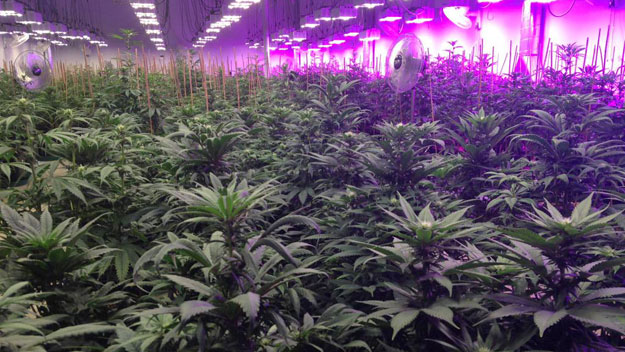
Eighty years of futility. It'd be funny if so many people weren't harmed in the process.
Another related driver behind the ban stemmed from racism within American society. Though cannabis had been used in medicines and hemp was used in industry to produce materials like rope (in the 1600s, colonists were actually required to grow it), Mexican immigrants introduced the practice of smoking the plant, which, “in turn, generated a reaction in the U.S., tinged perhaps with anti-Mexican xenophobia.” This fear spurred the 1906 regulation in the Pure Food and Drug Act and persisted into the 1930s.
As Rolling Stone noted, there had been conversations in the United States not just about cannabis use, but other drugs, since the late 19th century.
“But in the next 50 years, concerns about inebriation only translated into law if the substance wasn’t already controlled by a powerful industry, and if there was a perception, accurate or not, that a given drug was being used by poor people, immigrants, and people of color.”
As fears surrounding substance use grew, Rolling Stone observed, they dovetailed with racist stereotypes about the poor and minorities that assumed these groups were more likely to commit crimes, be lazy, and lack self-control when it came to “sex, violence, and intoxication.”
By 1952, Congress had passed the Boggs Act, which imposed strict mandatory sentences for various drugs, including cannabis. In the 1970s, the Controlled Substances Act was passed, placing drugs into “schedules” as we know them today.
Though Nixon touted the war on drugs as an effort to save society, one of his advisers, John Ehrlichman, reportedly claimed in the 1990s that they pursued cannabis as an effort to criminalize black and anti-war activist. Other former advisers then claimed Ehrlichman was either joking or mistaken, but a cursory examination of arrests for cannabis shows the war on weed has disproportionately affected African-Americans though they use the substance at roughly the same rate as white Americans.
Overall, according to the ACLU, cannabis arrests accounted for over half of all drug arrests between 2000 and 2010, and 88% of those were for possession.
Though states across the country have begun to legalize cannabis both for medicinal and recreational use, the federal government continues to dig its heels in. The DEA recently insisted that even cannabidiol, a non-psychoactive cannabinoid, falls into the ominous Schedule I category, which also includes MDMA, LSD, and mushrooms but fails to cover highly dangerous and toxic legal drugs like alcohol and opioids.
Many industries also continue to oppose cannabis legalization. The alcohol industry, the private prison industry, and prison guard and police unions all lobby against legalization. Most notably, pharmaceutical companies fight to keep cannabis illegal, all while at least one opioid producer concocts its own synthetic cannabis with the approval of the same FDA and DEA that opted to keep cannabis a Schedule I drug.
But against all these odds, cannabis continues to beat the government and establishment’s decades-long fight against it.
Many Americans have outgrown the fears instilled in them through films like Reefer Madness and are beginning to accept a live-and-let-live mentality. Though more research on the plant is undoubtedly needed (and limited due to federal restrictions), preliminary scientific studies and anecdotal evidence suggest the plant has the potential to treat a variety of ailments, from epilepsy to nausea to Parkinson’s disease. Veterans are increasingly using it to treat PTSD.

The United States’ relationship with cannabis is coming full circle, returning to times when it was a common ingredient in everyday medications. Many Americans are opting to substitute opioids with cannabis for pain, and opioid overdose deaths are lower in states with legal medical cannabis. Cannabis also poses a threat to profits from other pharmaceuticals.
Beer company profits have fallen in states where cannabis is legal, and some states are even moving to legalize hemp.
Meanwhile, cannabis industry is expected to generate $20 billion annually by 2020, and police are frequently trolled for attempting to enforce cannabis laws that Americans increasingly perceive as petty and unproductive.
All the while, federal bureaucracies continue to lag behind, clinging to outdated myths and prohibitions that — over the course of the better half of a century — have been debunked and proven ineffective, which is unsurprising considering humans have been consuming the plant for well over 2,000 years.
It’s all William Randolph Hearst’s fault who wanted weed to be in every anti-narcotics bill. An back then, as it seeems nowadays for some people, facts weren’t important.
Loginc and facts must prevail!